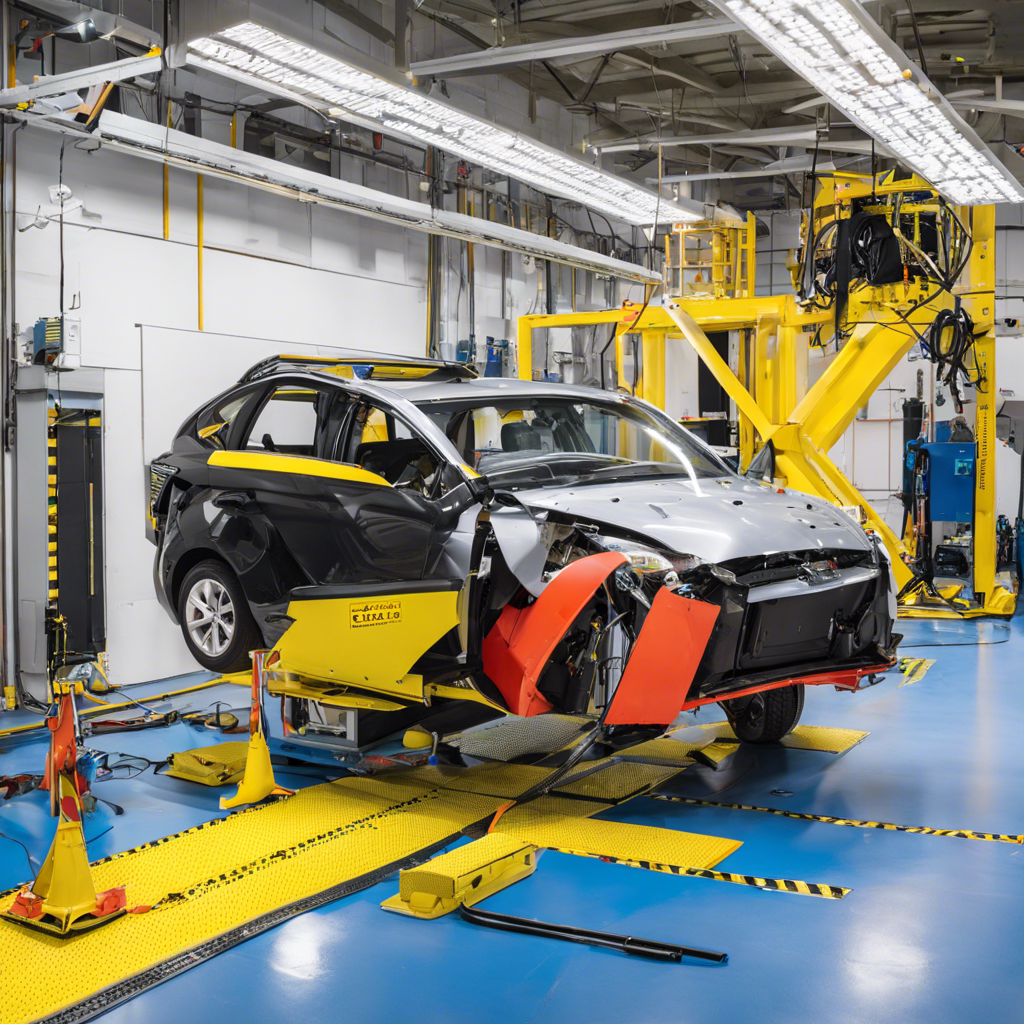Crash tests evaluate vehicle safety, influencing design and consumer choices.
Vehicle safety is a critical aspect of the automotive industry, and crash tests play an indispensable role in ensuring that vehicles on the road meet strict safety standards. These tests involve controlled impact simulations designed to evaluate a vehicle’s structural integrity, safety systems, and overall performance during collisions. This article delves into the significance of crash tests, how they are conducted, and their profound impact on enhancing automobile safety.
The Importance of Crash Tests
In the past, vehicle safety was an afterthought, with reckless driving and minimal safety regulations leading to high fatality rates. However, the turn of the century brought about a paradigm shift in the design philosophy, with safety taking center stage. Crash tests are pivotal in this transformation, providing a scientific and objective means to assess safety performance and implement necessary improvements.
Advancing Safety Standards
These tests serve as a benchmark for setting safety standards and regulations. The data gleaned from them is a cornerstone for government agencies and automotive manufacturers in establishing safety criteria for vehicle design, manufacturing, and performance. For example, the National Highway Traffic Safety Administration (NHTSA) in the United States and Euro NCAP in Europe mandate rigorous crash test protocols that vehicles must pass to ensure they meet minimum safety standards before hitting the market. These standards encompass a myriad of safety features, including seat belts, airbags, crumple zones, and advanced driver-assistance systems (ADAS), all of which are designed to minimize the risk of injury or death in the event of a collision.
Informing Consumer Choices
Crash tests are not only instrumental in shaping safety standards but also in empowering consumers with valuable safety information. Independent organizations like the Insurance Institute for Highway Safety (IIHS) and Euro NCAP conduct comprehensive crash tests and publish the results for various car models. These ratings provide a transparent view of each vehicle’s safety performance, allowing buyers to make informed decisions. Consumers can now prioritize safety, comparing results and selecting vehicles with superior safety ratings.
The Crash Test Process
Test Types and Procedures
Crash tests encompass a variety of scenarios and impact configurations. The most common types include frontal, side, and rollover tests, each simulating different real-world collision scenarios. Frontal tests assess vehicle behavior in head-on collisions, while side tests evaluate performance in lateral impacts. Rollover tests simulate the dynamics of a vehicle flipping over, a critical aspect of assessing roof strength and integrity.
Frontal Tests
These tests typically involve propelling a vehicle at various speeds into a fixed barrier, simulating head-on collisions with another vehicle or a stationary object. The impact speed can range from 35 to 65 mph, depending on the protocol.
Side Tests
Side-impact tests involve propelling a moving barrier into the side of a stationary vehicle at speeds of around 30 mph. This simulates the impact of another vehicle striking the side of the test vehicle.
Rollover Tests
Rollover tests are designed to assess a vehicle’s stability and roof strength in the event of a roll. The vehicle is driven along a curved track at increasing speeds until it rolls over.
Impact on Vehicle Design and Manufacturing
The insights gained from crash tests have a profound impact on vehicle design and manufacturing processes. Manufacturers use these tests to identify areas for improvement, leading to significant advancements in safety features. For instance, the implementation of crumple zones, which are engineered to absorb and dissipate impact energy, has been a direct result of crash test data. Additionally, the positioning of airbags, seat belt pretensioners, and collision avoidance systems has been optimized based on crash test feedback.
Frequently Asked Questions
How do crash tests contribute to overall road safety?
Crash tests play a pivotal role in improving overall road safety. By simulating real-world collision scenarios, they provide valuable insights into vehicle behavior during accidents. This data is crucial in setting safety standards, guiding vehicle design, and manufacturing processes. As a result, vehicles are safer, with enhanced structural integrity and improved safety systems, leading to a reduction in the severity of injuries and fatalities on the roads.
Are all vehicles required to undergo crash tests before hitting the market?
In most developed countries, yes. Stringent safety regulations mandate that all new vehicles undergo rigorous crash tests before they can be sold to the public. These tests ensure that vehicles meet minimum safety standards, protecting occupants and other road users. The specific tests and standards may vary by region, but the goal is always to enhance safety.
How do crash tests influence consumer choices?
Crash tests provide consumers with valuable safety information that can significantly influence their purchasing decisions. By comparing the performance of different vehicle models in these tests, buyers can prioritize safety and choose vehicles with superior safety ratings. This transparency in safety performance allows consumers to make informed choices, fostering a safer automotive market.
Conclusion
Crash tests are indispensable tools in the automotive industry’s quest for safer vehicles. They provide a scientific, objective means to assess safety performance, leading to the continuous improvement of vehicle design and safety standards. By subjecting vehicles to controlled impact simulations, these tests reveal critical insights that guide manufacturers in enhancing structural integrity and safety systems. Moreover, crash test results empower consumers with the knowledge to make informed choices, prioritizing safety in their vehicle purchases. As the automotive industry advances, the role of crash tests in driving safety innovations and reducing road fatalities remains pivotal.
Relevant External Links
1. IIHS Vehicle Safety Ratings
